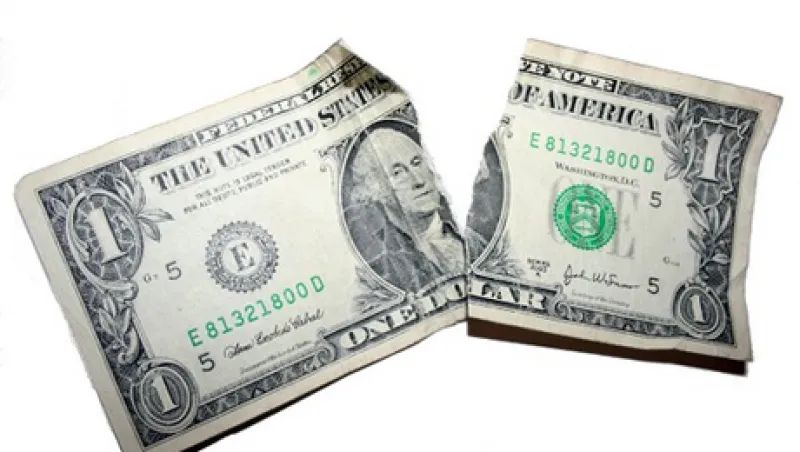While world currency markets appear to have stabilized as investors await a final decision on a settlement for Greece’s debt crisis, some voices on Wall Street are raising the alarm about a possible collapse in the value of the U.S. dollar and an ensuing round of destructive devaluations by America’s major trading partners.
One of the most outspoken supporters of this view is James Rickards, a senior managing director at Tangent Capital, which provides investment banking to alternative asset managers like hedge funds. Rickards has just published a book called Currency Wars: The Making of the Next Global Crisis, which predicts a dramatic drop in the value of the U.S. dollar.
Rickards maintains that the cause of the dollar’s decline is the Federal Reserve’s use of so-called quantitative easing to reduce interest rates. The Fed has bought more than $2 trillion worth of government bonds since 2009, in effect creating new money.
Rickards says in the book that when the dollar starts to fall, it will soon turn into a rout, which will be followed by competitive devaluations by rival countries seeking to preserve their position in world trade. “The growth of globalization, derivatives and leverage have made financial panic impossible to contain,” Rickards says.
Rickards notes that there has already been a few signs of the expected currency war, such as Brazil’s efforts to reduce the value of the real and Korea’s efforts to impose capital controls.
While the Fed’s money printing did not cause the expected burst of inflation in the U.S. that some had anticipated, it did send inflation higher in countries that pegged their currencies to the dollar such as China and Thailand. In summer 2010 China ended its peg against the dollar, and Rickards says it was the result of U.S. monetary policy.
Rickards said in an interview that last week’s surge in the price of gold over $1,700 an ounce was due to Federal Reserve chairman Ben Bernanke’s hints that he would opt for more quantitative easing in the future if the economy continues to drag.
Rickards is predicting that the value of gold will reach $7,000 when the dust clears in the currency wars and says that is a good reason to go back on the gold standard, which was abandoned by Richard Nixon in 1971.
“Bernanke all but said they were going to go to more money printing and that’s all it takes to get gold going,” Rickard says. “I like to say gold never changes — an ounce is always an ounce — what happened is the dollar went down and it takes more dollars to buy that ounce.”
Rickards is mindful that predicting the collapse of the dollar right now is complicated by the fact that money seems to be pouring out of Europe and Asia into U.S. Treasuries and American assets still have the protective sheen of a safe harbor.
But he reckons that won’t last forever, comparing the situation to a ski resort where snow has built up on the mountainside threatening an avalanche. “Now when that happens do you blame the snowflake or the unstable condition of the mountain?” Rickards says. “What is the snowflake that causes the avalanche? I don’t know but I do know that it’s snowing, and I know the avalanche is coming.”
Of course, there is a chorus of economists led by Paul Krugman who are happy to point out that the gold standard was largely responsible for the Great Depression in some countries such as Britain.
Rickards agrees but says it was not the standard itself but the price at which gold was pegged that caused the difficulties. Britain had doubled its money supply during World War I, he says in a detailed history of the era, and by going back on the gold standard at the old price, it cut its money supply in half, which caused a 10-year depression.
Rickards favors adoption of what he calls a flexible gold standard. Not flexible in terms of the price of gold, but flexible in the sense that the Fed would be able to print money at times of crisis to ease unemployment.
Unlike Republican presidential candidate Ron Paul, he does not favor the abolition of the Federal Reserve. He says that the U.S. could avoid a currency war by adopting what he calls the King Dollar approach, which is his name for the policy adopted by former Fed chairman Paul Volcker under Ronald Reagan to rein in inflation by raising interest rates to double digit levels.
Rickards derides the idea of adopting some other currency to replace the dollar as the world reserve currency. The Chinese and Russians have suggested using Special Drawing Rights (SDR) issued by the International Monetary Fund instead of the dollar to denominate world trade.
“If you don’t believe in American power, if you think America is the problem and not the solution, then you would probably favor something like the SDR,” he says.






